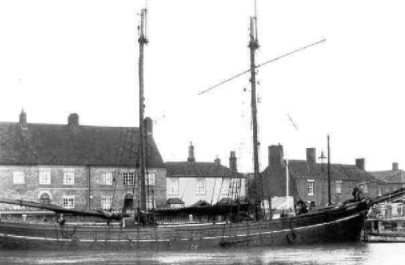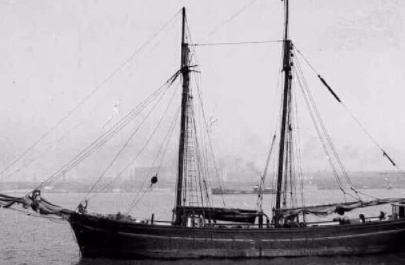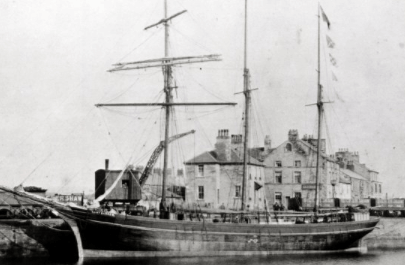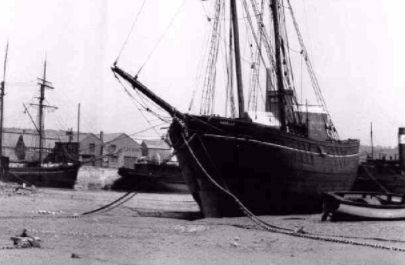Shipwrecks of Cumberland vessels in Dublin Bay, 1844
One of the most violent storms ever known upon the Irish coast blew from the eastward on Friday morning, March 15th and Saturday, March 16th. The injuries sustained by vessels and the damage done to property in Kingstown has been very considerable.
On Saturday the sea was so convulsed, and the weather so tempestuous, that the railway trains could run only upon the rail farthest from the shore, as the waves for a great portion of the line made clear breaches over the wall, and in some places smashed the ballasting away. The down-train at a quarter before eight oclock, consisting of the Kingstown engine and eight carriages got off the line, the rails having been disturbed by the terrific force of the sea. In less than three hours all was again set right, without any injury to either engine or carriage.
A more angry and awful sea has not been witnessed for many years in the Bay of Dublin, and to a certain extent raged within the harbour by which many vessels have been wrecked. Three brigs and two schooners drove on the rocks near Mr. Fagan's shipyard, and have become perfect wrecks; several others ran into the Old Harbour, which is anything but a safe retreat. They had either burst their chain cables, or slipped them when fouled by vessels that had broken adrift. Those unfortunate vessels have likewise suffered terribly. Melancholy to state, the schooner Seymour, of Bray, coal-laden, from Whitehaven, was overwhelmed by a sea when crossing the Burford Bank, and all hands perished. This sad sight was seen by the crew of the brig Endeavour, of Whitehaven, which also struck on the bank, and is expected to have been swallowed up in a similar manner. All the vessels that anchored within that part of the harbour, which is sheltered by the East Pier, held fast. To the exposed anchorage of the unfortunates, where little or no shelter is afforded from easterly gales, with most probably bad ground tackle, which chain cables are, and particularly when manufactured of bad iron, which they most commonly are, is to be attributed the loss of those vessels. One half of this fine harbour affords no security, by reason of the defective construction of its entrance and any person observing the mountainous sea rushing against the west pier-head, and lashing the strong works erected there preparatory to its being faced similar to the east pier-head, must at once perceive that the whole sea enters the harbour, and rushes straight forward to the old harbour, or coal-quay, which was, before the west pier was ever built, comparatively a safe cove to what it is likely ever to be again. The names of the vessels wrecked are as follows:
The brig Hemer, of Maryport, total wreck; the brig Mary, of Whitehaven, sunk; the schooner Betties, of Liverpool, sunk; the schooner Tom, of Whitehaven, sunk; the Thomas Agnes, of Preston, sunk; the schooner Bellevue, of Greystone, perfect wreck; the Jane and Francis, of Wexford, much injured. The brig Pandora, of Whitehaven; the sloop Colonel Smith, of Caernarfon: the sloop Catherine, of Newry; the Maria, of Whitehaven, all more or less damaged.
The Kish lightship either parted, or slipped and ran for Dublin, on Sunday morning, on the gale having ceased, which is rather extraordinary. No calamity is likely to arise from this circumstance, as care has been taken to warn the Liverpool and Holyhead packets of it, which has also been communicated, no doubt, long since, by means of telegraphs all round the coast. Several of the small vessels enumerated were wrecked in view of the two packets which were anchored in the harbour, and dared not attempt to offer the least assistance, as such a step might have proved destructive to themselves. As far as can yet be ascertained, no life has been lost in the harbour, nor was it necessary to use the lifeboat, but every exertion which could be made to rescue the vessels and save the men was made by the sailors and pilots under the control of Captain Hutchinson, the harbour master.



